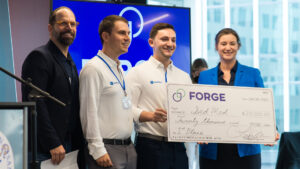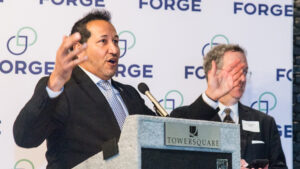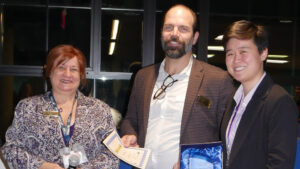Agtech Rocket Roundtable: 3 Takeaways
What did we learn from bringing together 3 of the most cutting edge agtech startups and a panel of manufacturing veterans? In short, most design challenges are not one-size fits all. Here are 3 key takeaways from FORGE’s Rocket Roundtable, featuring Carl Palme from Boundless Robotics, Andrew Meersand from Adaviv, and Kaan Armagan and Herbert Namirski from Vertum Technologies, as well as Mark Tabor from Samtec, Fadi Salibly from Bossard, Nathan Desrochers from Axis New England, Mike Lee from ICSN, and Lenny Brooks from Alpine Bearing.
1. Define your priorities
Having a hierarchy of product features will help guide you through the tricky product design landscape. Linear motion control, in particular, is a game of give and take. Traits such as maximum speed, acceleration, accuracy, stroke length, repeatability, and durability all affect one another. They determine which linear motors and linear actuators one needs. A device with a long distance to travel may need a belt driven linear actuators, which in turn affects both speed and accuracy. Knowing which features are most important is often a big help for teams.
2. Brainstorm linear motion control challenges
When working with robotics, linear motion control is a challenge startups inevitably face. Since linear motion control is determined by a number of interdependent factors, a dilemma of this sort can have dozens of solutions. Both Adaviv and Vertum Technologies are building devices that involve linear motors. However, they had very different requests. One of the startups needed to sync stepper motors, and the other needed to waterproof stepper motors.
Our experts’ answers varied, which is great news for those of you struggling with similar issues. For example, when answering the synchronization question, Nathan Desrochers from Axis New England told the startup to consider using a multi axis stepper drive. On the other hand, Mike Lee from ICSN suggested using a central controller that communicates with each device so if any unit runs into an obstacle, it controls all the other systems. And both are great options! Why? Linear motion is determined by many interdependent controls. The machine’s performance can be affected by physical traits such as the thread spacing of a ball screw or manipulated using formulas like the overdrive ratio. You have options.
3. Talk to the experts- they know people who know people
Mark Tabor from Samtec, a cable and wire supplier, connected Boundless Robotics with an expert for their wood paneling. Mike Lee from ICSN, a contract manufacturer, also connected Boundless Robotics with an advertising agency specialized in their target market. Moreover, after our Rocket event, all the startups were connected with one another. There is so much untapped potential in the innovation and manufacturing communities. These Rocket Roundtables are the perfect think-tanks to dip your toes into this type of collaboration!
If you get suggestions that don’t align with one another from various experts, that is okay. Even if you stump experts, that is okay. There is no shortage of advice, you just need to prioritize tech features and ask questions.
To talk with experts that can help, connect with FORGE!







